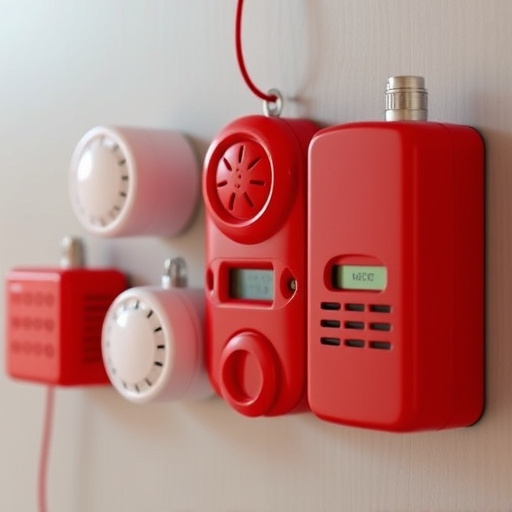College students need personal attack alarms for immediate protection during emergencies. Key features include high decibel sound (100+ dB), long battery life, and water resistance. The alarm's sound range is vital, extending beyond campus to ensure help arrives promptly. Students must balance safety and privacy, understanding campus protocols for effective usage while maintaining awareness. Integrating these alarms into routines offers extra protection through loud noise, startling attackers and alerting authorities.
Personal safety alarms are essential tools for college students, offering a sense of security on and off campus. With increasing personal safety concerns, these devices provide a simple yet effective way to deter potential threats. This article explores the importance of personal attack alarms for students, guiding them through key features, sound range considerations, addressing privacy issues, and integrating alarms into comprehensive safety strategies. Understanding these aspects ensures students make informed choices for their well-being.
- Understanding Personal Safety Alarms for College Students
- Key Features to Consider in Attack Alarm Devices
- Evaluating Sound Range: Protection Beyond Campus
- Privacy Concerns and Security Measures
- Integrating Alarms with Personal Safety Strategies
Understanding Personal Safety Alarms for College Students
Personal safety alarms are designed to be a crucial tool for college students, offering immediate assistance during personal attacks or emergencies. These compact devices emit high-decibel alarm sounds that can attract attention and deter potential threats, ensuring faster response times from authorities or fellow students. The typical range of these alarms varies, with many models featuring an effective sound projection of up to 100 decibels, which is significantly louder than the average human scream.
College students often find themselves navigating new environments and situations, making personal safety a priority. By carrying a safety alarm, students can instantly signal for help in case of an unexpected encounter. The devices are easily portable, allowing users to attach them to bags, keys, or even wear them as necklaces or pins. With just a quick activation, the distinct alarm sound ranges can alert nearby people and potentially disrupt dangerous situations, providing valuable time for students to escape or receive assistance.
Key Features to Consider in Attack Alarm Devices
When choosing a personal attack alarm device, several key features should be top of mind for college students looking to enhance their safety. Firstly, consider the personal attack alarm sound range. A device with a sufficiently loud and high-decibel output (typically 100+ dB) ensures your cry for help can reach nearby ears, even in noisy environments like dormitories or campus areas. This feature is vital for attracting attention quickly during an emergency.
Additionally, look for alarms that offer long battery life and water resistance. Durability is essential, especially if you plan to carry the device with you everywhere. A long-lasting battery means less frequent charging, while water resistance protects against accidental exposure to liquid, a common occurrence in active student lifestyles.
Evaluating Sound Range: Protection Beyond Campus
Personal safety alarms for college students must consider more than just campus boundaries. While the immediate environment is crucial, evaluating the sound range of an alarm can offer enhanced protection. A personal attack alarm should have a sufficient reach to alert nearby authorities or fellow students even when you’re off-campus. This ensures that help can arrive promptly, especially in scenarios where a student faces distress outside their familiar surroundings, such as late-night studies at a library or walking home after an event.
The sound range capability varies among alarms, so it’s essential to research and choose one with a powerful yet adjustable sound projection. This feature not only guarantees loud enough alerts but also allows users to customize the volume based on their comfort levels and surroundings. With such considerations, college students can carry peace of mind, knowing that their personal safety alarm is capable of protecting them beyond campus limits.
Privacy Concerns and Security Measures
College students, while enjoying their newfound freedom, may face situations where personal safety becomes a concern. One common challenge is balancing privacy and security when considering personal safety alarms. These devices, designed to deter potential attackers, offer crucial protection but can raise questions about individual privacy. Students need to understand that while setting up an alarm, they are not compromising their privacy entirely; it’s more about striking a balance.
Security measures include ensuring the alarm’s sound range is sufficient to startle and scare off attackers without broadcasting sensitive information. Modern personal attack alarms employ advanced technology, such as high-decibel sounds, that can alert others nearby without revealing personal details. Additionally, students should familiarize themselves with campus security protocols, ensuring they know how to activate these alarms effectively and the steps to take afterward.
Integrating Alarms with Personal Safety Strategies
Integrating personal safety alarms into your routine is a proactive step for college students, but it’s just one piece of the puzzle when it comes to personal safety strategies. These devices are designed to provide an extra layer of protection during potential dangerous situations, such as personal attacks or emergencies. By combining the use of an alarm with self-defense techniques and awareness training, students can enhance their overall security.
When considering a personal attack alarm, understanding its sound range is essential. Alarms typically emit a loud, distinct noise to startle and deter attackers, with ranges varying from 50 to 120 decibels. This powerful sound can attract attention and alert nearby individuals or authorities, ensuring swift response times. Effective integration involves learning when and how to activate the alarm, practicing self-defense moves, and being mindful of your surroundings at all times.
Personal safety alarms for college students offer a crucial layer of protection, especially as young adults navigate unfamiliar environments. By understanding key features like sound range and integrating these devices into comprehensive personal safety strategies, students can enhance their security both on and off campus. Choosing the right alarm, addressing privacy concerns, and combining it with self-defense knowledge empowers individuals to stay safe while pursuing their academic pursuits.
